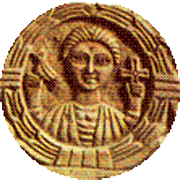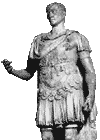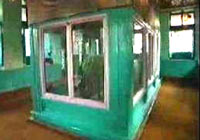Did Julius Caesar Exist? But Jesus Did Not Exist
‘Jesus better documented than any other ancient figure’? Don’t believe a word of it!
Unlike the mythical Jesus Christ and we can be absolutely sure Jesus did not exist , we know what Caesar looked like and we have a complete history of his life. In turn, general, orator, historian, statesman and lawgiver. We have words written by Caesar himself and words written by both his friends and his enemies. Artifacts confirm his life and death, as do his successors. Caesar established a style of government – and a calendar – which endured for centuries.
Evidence that confirms the existence of Caesar is legion – in stark contrast to the utter dearth of evidence for Jesus! The starting, and for many, disturbing truth is that Jesus did not exist.
Caeasar: Images from his own lifetime


Caeasar: Images from his own lifetime
Contemporary images of Jesus? Nothing!

Recognise this clean-shaven young man? A Coptic vision of Jesus from the 6th/7th century.

Fantasy Meets Reality
"No Evidence of Non-existence" – Welcome to the Twilight Zone

Caesar: In His Own Words – a great deal
Jesus: In His Own Words – Nothing
Contemporary Witnesses to Caesar
A Fake Witness
Who Says?
Write your own Jesus Lore!
The gospels provide detailed “Jesus action” for the last year or so of his life but are deafeningly silent about the other 30-odd years. 90% of the godman’s biography is missing.
Fraud of Ages
Sources
- Arthur Ferrill, The Fall of the Roman Empire (Thames & Hudson, 1986)
- Edward Gibbon, The Decline & Fall of the Roman Empire (1799)
- Michael Grant, Jesus (Orion, 1999)
- Chris Scarre, Chronicle of the Roman Emperors (Thames & Hudson, 1995)
- Pierre Grimal, Rome of the Caesars (Phaidon, 1956)
- A. N. Wilson, Jesus (Harper Collins, 1993)
- Elmar Gruber, Holger Kersten, The Original Jesus (Element, 1995)
- Stewart Perowne, Death of the Roman Republic (Hodder & Stoughton, 1969)
- Suetonius, The Twelve Caesars (Penguin, 1980)
Related articles
Divus Iulius!

The Jesus Seminar
In contrast, Caesar's words and deeds are fully documented by multiple witnesses.
Extant Letters –

75 Caesar is captured by Cilician pirates and held for 38 days. On release, he returns in force and crucifies them.
73 Elected pontifex, senior state priest.
69 Caesar’s wife Cornelia dies.
67 Marries Pompeia, granddaughter of dictator Sulla.
67 Marries Pompeia, granddaughter of dictator Sulla.
Julius Caesar as Pontifex Maximus on denarius from 63 BC. He wears the priest's hood.


Conquering Hero
Caesar's own account of this war also survives: De Bello Civili.




* Be careful – If you try hard enough you could find 12 things in common between any two figures.
Caesar wore sandals, Jesus wore sandals …

The Rubicon Analogy


